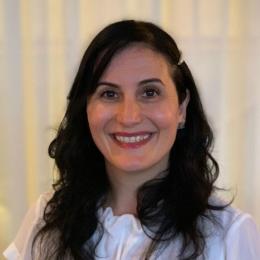We constantly search for meaning — in our lives and everything around us. We might read books about the meaning of life the universe and everything, or watch six seasons of Lucifer, waiting to find out if the Devil finds his true purpose.
What is meaning?
Meaning is often described as “the cognizance of order, coherence, and purpose in one’s existence, the pursuit and attainment of worthwhile goals, and an accompanying sense of fulfillment.”
Three simpler and more accessible ways to understand meaning are from Austrian psychiatrist and Auschwitz survivor, Viktor E. Frankl, Dr. Martin Seligman (regarded as the father of positive psychology), and Professor Emeritus of Trent University Dr. Paul Wong.
Frankl: Our search for meaning
Frankl, amid his suffering in Auschwitz, invented “meaning therapy” (logotherapy), which helps people make decisions that will create significance in their lives.
In Man’s Search for Meaning, he described how, in a particularly difficult moment, he understood he needed to find some purpose to survive. To do this, he imagined giving lectures to people afterward helping them understand what he and others went through.
Frankl argued that there was “some kind of meaning out there for each of us and that our primary job is to discover it and give it life.”
Seligman’s PERMA model
Seligman identified five intrinsically motivating components people pursue that contribute to well-being, known as PERMA:
- Positive emotion
- Engagement
- Relationships
- Meaning
- Accomplishments
While Seligman’s model states, “A sense of meaning and purpose can be derived from belonging to and serving something bigger than the self,” it goes on to describe the more granular (and more relatable) institutions that enable a sense of meaning, including, work, family, science, politics, work, justice, the community, and social causes (e.g., going green).
Wong’s PURE model
Wong uses the PURE acronym to get his point across.
The PURE model describes the four components Wong advocates for living a meaningful life and doing meaningful work as well as being a roadmap for corporate excellence.
- Purpose (motivational component). This is about life’s direction, purpose, and having a vision and mission to unify people behind a common goal.
- Understanding (cognitive component). This is about making sense of what is happening and knowing ourselves, others, and the environment around us. Companies need this to create a sense of community.
- Responsible action (the deportment component). This is about doing something, making the right decisions, hiring the right people, developing the right product, and eliminating wasteful practices.
- Enjoyment/Evaluation (the emotional component). This is about how the individual feels about things — how one is connected to life.
How to find meaning in our lives and at work
We can find meaning in our lives every day.
Find your strengths
Identify and build your strengths and apply them to your work and daily life — try questionnaires such as Values In Action Inventory or the Clifton Strengths Assessment.
What is your locus of control?
Approach your work with an internal locus of control. If “you’re waiting for an employer to design the dream job that will supply you with meaning and purpose, and to somehow connect you with that job, you’ve conceived the external locus for yourself. And you might be waiting a long time.”
Having an external locus of control is believing chance, luck or environmental factors control your life. Approaching your work with an internal locus, means you’re actively engaged in supplying meaning and purpose for yourself.
Craft a meaningful career
Consider job crafting, where employers and employees work together to design work that’s meaningful and purposeful.
Dr. Amy Wrzesniewski, found that the difference between individuals who see their occupation as a “job” a “career” or a “calling” is based upon the meaning they find in their work, rather than job title or position.
For example, janitors at retirement homes are just as likely as Wall Street Bankers to find their work to be a calling — provided they see, for example, how their work is helpful to others and how their strengths are needed.
Job crafting improves performance and gives workers a greater sense of satisfaction and well-being. If you are doing work that’s not meaningful to you — can you recraft and reframe that work in a way that connects it to a larger, more meaningful purpose?
Identify what contributes (and takes away) from your meaning
Shawn Achor, in Before Happiness, and in Big Potential, suggested the following methods.
Identify “meaning markers,” which are things in many areas of your life that matter to you: career advancement, better health, etc. Be specific about your meaning markers. For example, “find more time to read” or “be a positive role model for my son.” Also considered a “balanced portfolio” mentioned in an Atlantic article.
Ask yourself daily: What is one action I will take today that will get me closer to my meaningful goals?
Identify things that pull you off your path (e.g., getting e-mail alerts, hanging out with negative people) and think about how to avoid them.
Identify how to connect with others on a deeper level and finding opportunities to “brighten someone’s day because of your interactions.”
If you don’t see your current role as your calling stop yearning for about some future dream role, or you will “never see the beauty of the one you are currently in.”
Living with meaning and purpose
Living with meaning and purpose is not easy. It requires patience, practice, and self-reflection.
If you are worried your meaning isn’t significant enough, try using perspective and seeing how all meaning is equal in a larger context. To gain perspective, I look at the Apollo 8 Earthrise photo, a significant environmental photo and one described by David Attenborough as showing “our one home together in the cosmos.”




